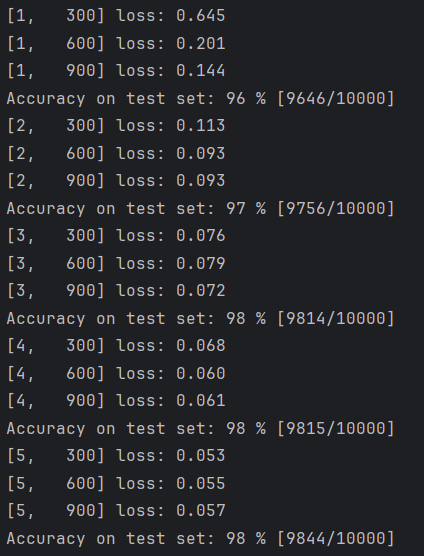Appearance
Basic CNN
Revision: Fully Connected Neural Network
Fully Connected Neural Network:全连接神经网络
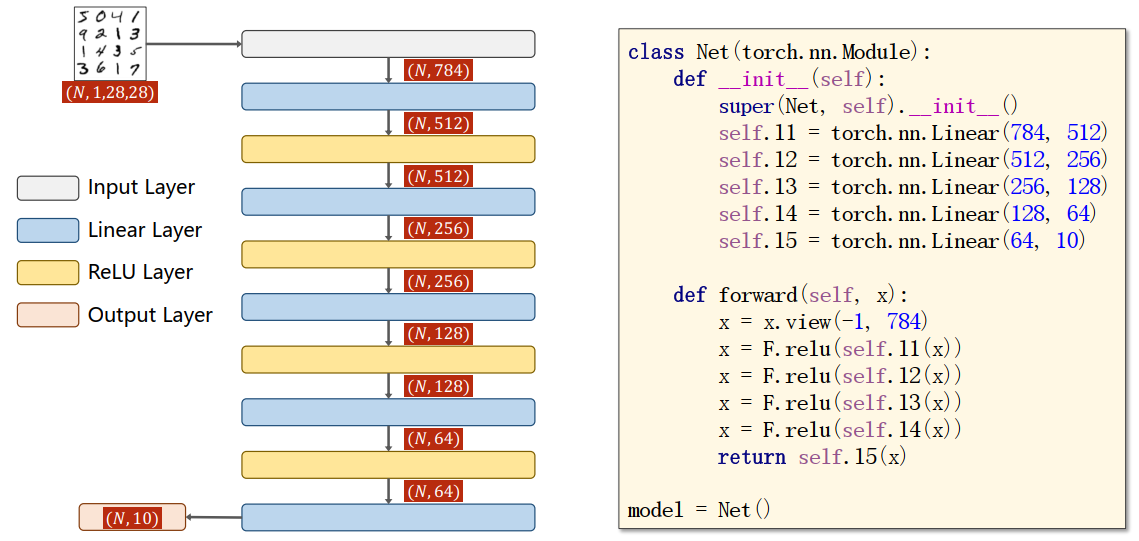
Convolutional Neural Network
Convolutional Neural Network:卷积神经网络
全连接神经网络直接将图像拼接处理成一阶的张量,原本相邻的两个点可能不再相邻,图像失去了空间信息。
而卷积神经网络能够保留原始的空间信息。
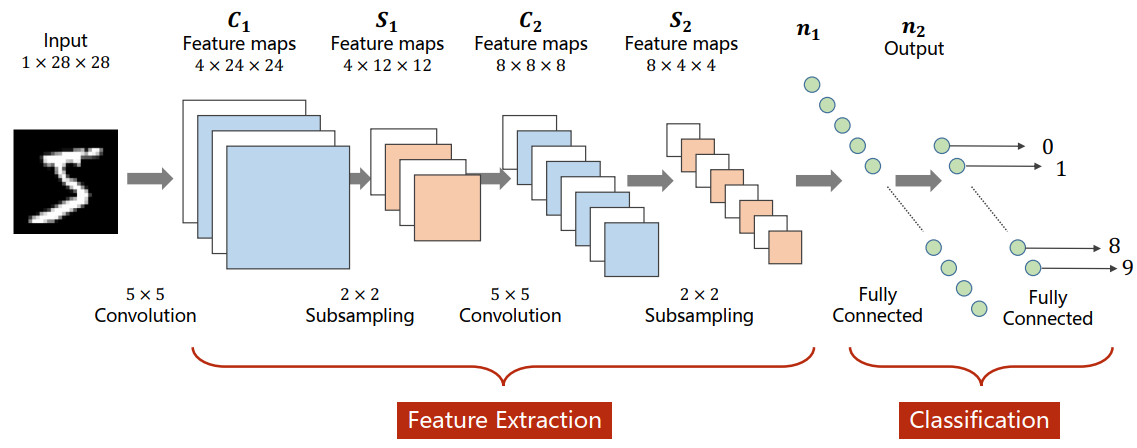
特征提取(Feature Extraction):卷积(Convolution)、下采样(Subsampling),得到向量
分类(Classification):全连接网络
Convolution
栅格图片的形式:
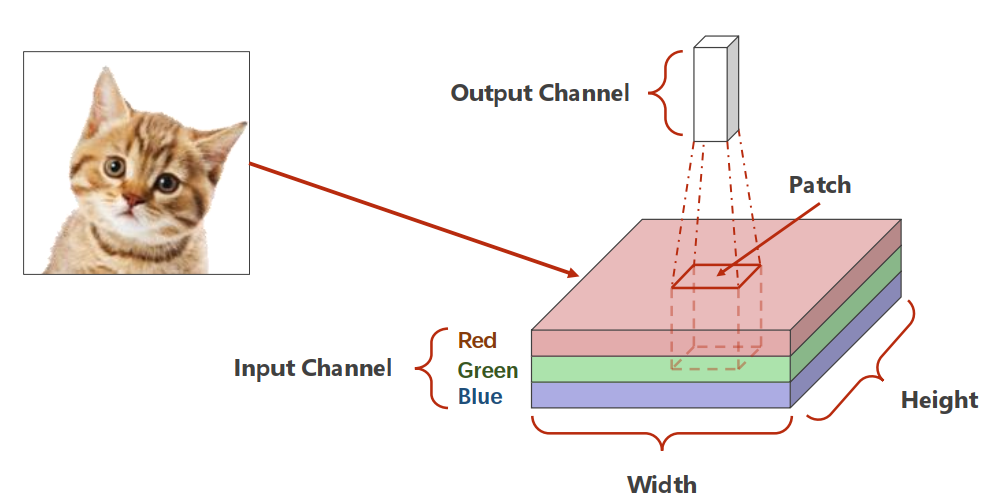
对图像的一个Patch做卷积得到Output Channel,Channel、Height和Width都可能发生改变。
Single Input Channel
单通道卷积的具体过程过程:
输入一个的图像,使用的卷积核
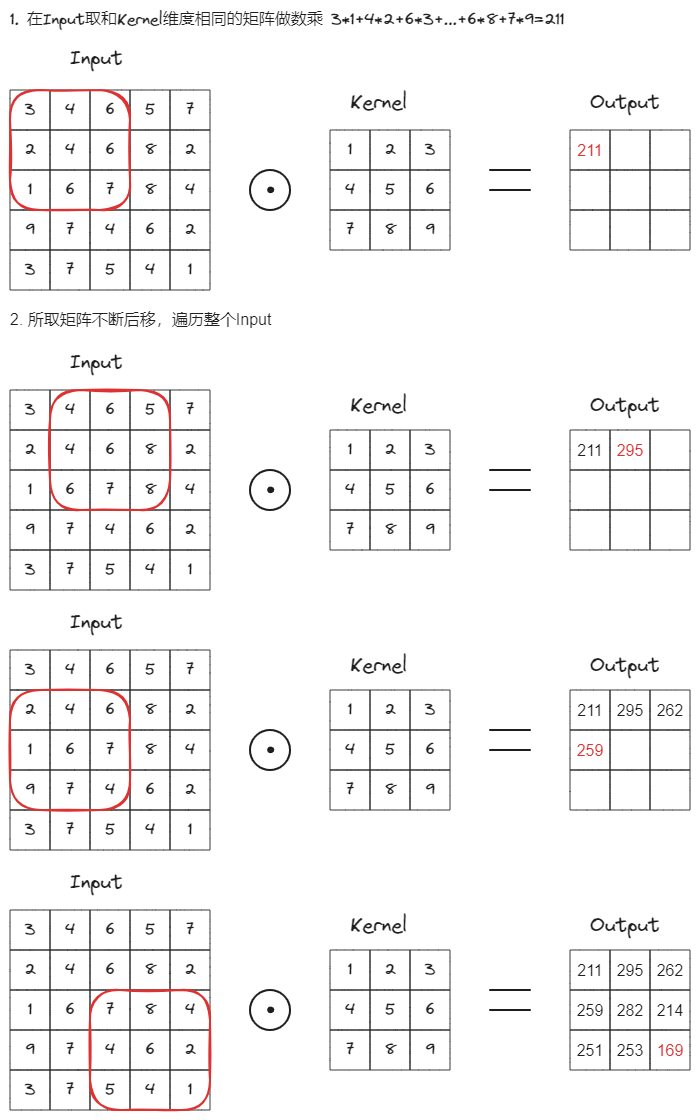
3 Input Channels
三通道卷积,每个通道各与一个卷积核卷积结果相加。
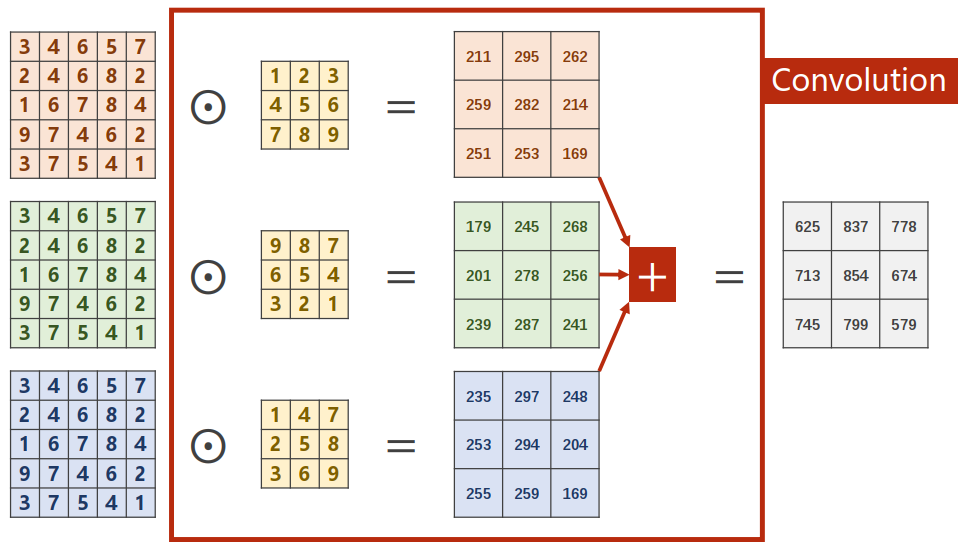
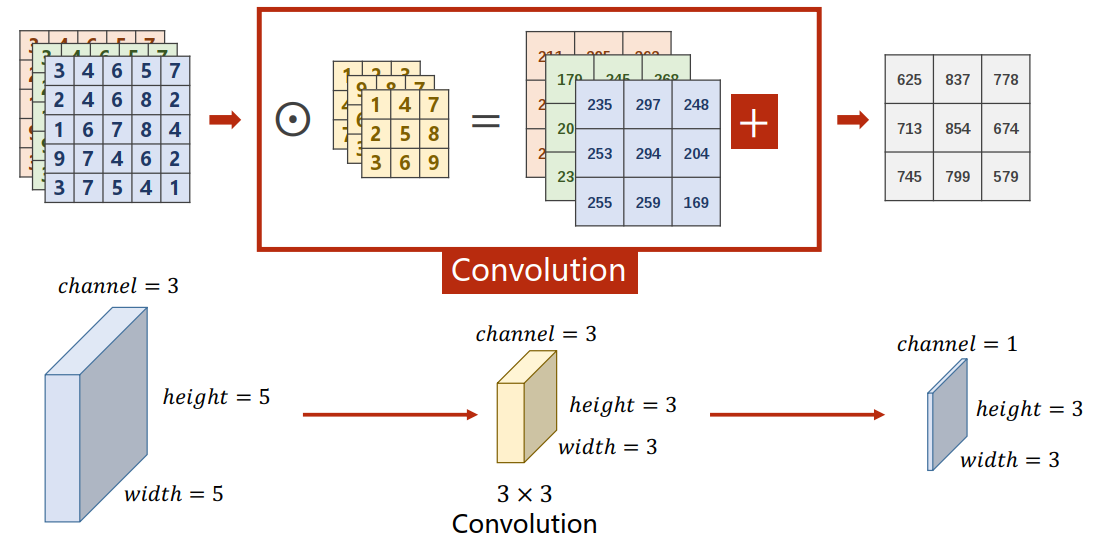
N Input Channels
有几个输入通道卷积核就要有几个通道。
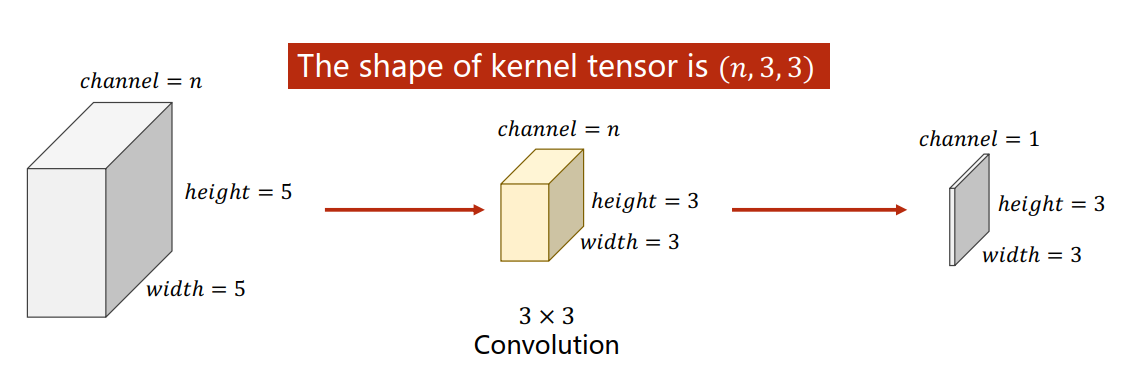
需要m个输出通道,就需要有m个卷积核。
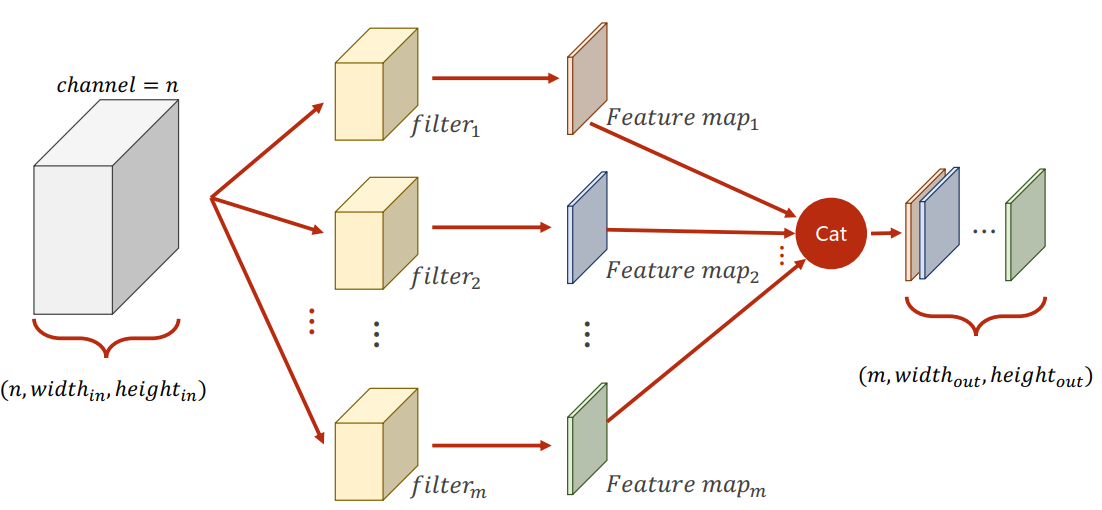
Convolution Layer
输入:
输出:
需要个的卷积核。
可以把这个卷积核拼成一个四维的张量。
import torch
in_channels, out_channels = 5, 10
width, height = 100, 100
kernel_size = 3
batch_size = 1
input = torch.randn(batch_size,
in_channels,
width,
height)
conv_layer = torch.nn.Conv2d(in_channels,
out_channels,
kernel_size=kernel_size)
output = conv_layer(input)
print(input.shape)
print(output.shape)
print(conv_layer.weight.shape)输出结果:
torch.Size([1, 5, 100, 100])
torch.Size([1, 10, 98, 98])
torch.Size([10, 5, 3, 3])padding
padding=1
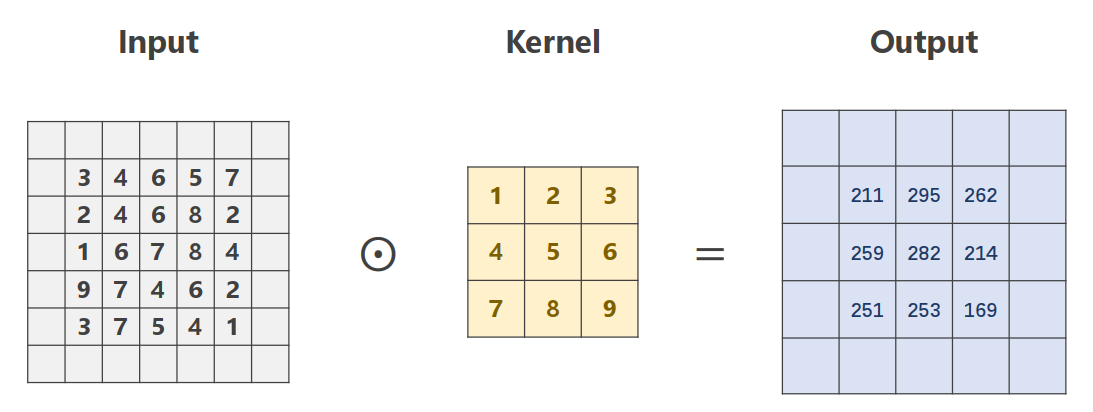
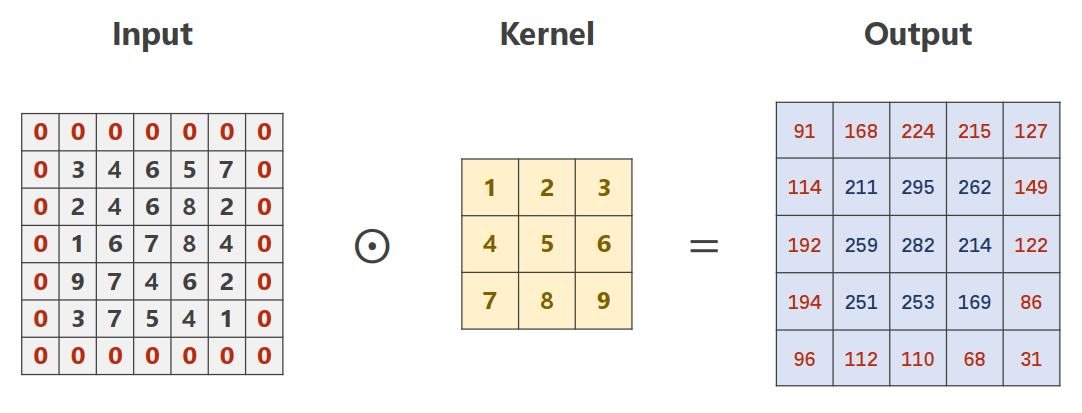
import torch
input = [3, 4, 6, 5, 7,
2, 4, 6, 8, 2,
1, 6, 7, 8, 4,
9, 7, 4, 6, 2,
3, 7, 5, 4, 1]
input = torch.Tensor(input).view(1, 1, 5, 5)
conv_layer = torch.nn.Conv2d(1, 1, kernel_size=3, padding=1, bias=False)
kernel = torch.Tensor([1,2,3,4,5,6,7,8,9]).view(1, 1, 3, 3)
conv_layer.weight.data = kernel.data
output = conv_layer(input)
print(output)Tips
要维持输入输出的宽和高不发生改变,则padding=kernel_size/2(下取整)
stride
步长,stride=2
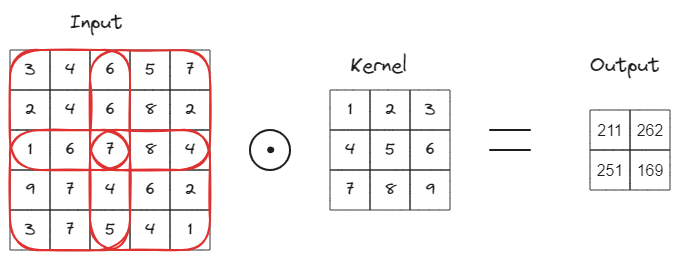
import torch
input = [3, 4, 6, 5, 7,
2, 4, 6, 8, 2,
1, 6, 7, 8, 4,
9, 7, 4, 6, 2,
3, 7, 5, 4, 1]
input = torch.Tensor(input).view(1, 1, 5, 5)
conv_layer = torch.nn.Conv2d(1, 1, kernel_size=3, stride=2, bias=False)
kernel = torch.Tensor([1,2,3,4,5,6,7,8,9]).view(1, 1, 3, 3)
conv_layer.weight.data = kernel.data
output = conv_layer(input)
print(output)Subsampling: Max Pooling Layer
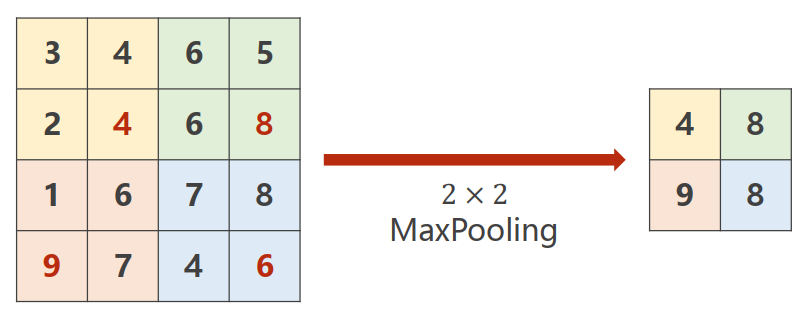
分组,然后在每组里找最大值,再拼接。
通道数不会变化。
import torch
input = [3, 4, 6, 5,
2, 4, 6, 8,
1, 6, 7, 8,
9, 7, 4, 6,
]
input = torch.Tensor(input).view(1, 1, 4, 4)
maxpooling_layer = torch.nn.MaxPool2d(kernel_size=2)
output = maxpooling_layer(input)
print(output)A Simple Convolutional Neural Network
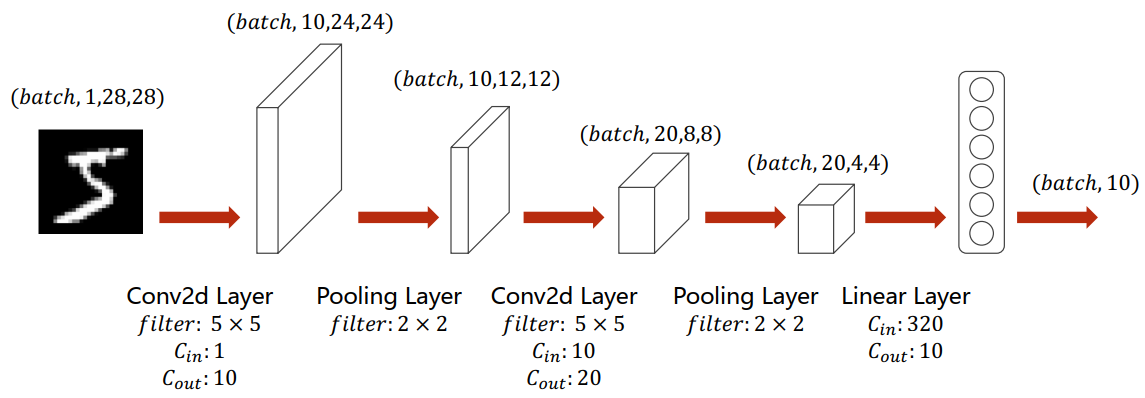
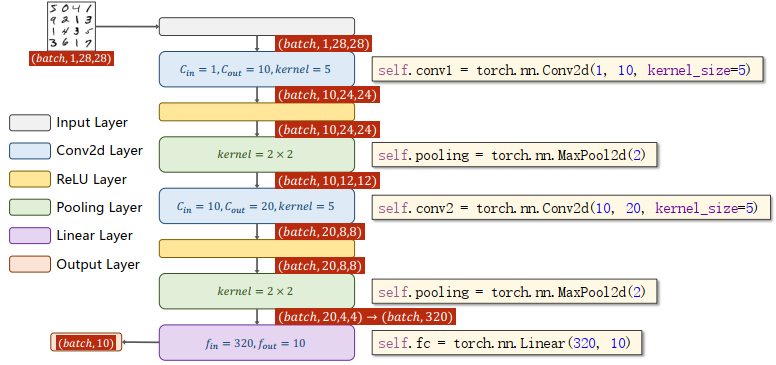
class Net(torch.nn.Module):
def __init__(self):
super().__init__()
self.conv1 = torch.nn.Conv2d(1, 10, kernel_size=5)
self.conv2 = torch.nn.Conv2d(10, 20, kernel_size=5)
self.pooling = torch.nn.MaxPool2d(2)
self.fc = torch.nn.Linear(320, 10)
def forward(self, x):
# Flatten data from (n, 1, 28, 28) to (n, 784)
batch_size = x.size(0)
x = F.relu(self.pooling(self.conv1(x))) # 第一组:卷积、池化、激活
x = F.relu(self.pooling(self.conv2(x))) # 第二组:卷积、池化、激活
x = x.view(batch_size, -1) # flatten
x = self.fc(x) # 全连接
return x把上一节代码的模型替换成这个模型即可。
How to Use GPU
1. Move Model to GPU
- Define device as the first visible cuda device if we have CUDA available.
- Convert parameters and buffers of all modules to CUDA Tensor.
model = Net()
device = torch.device('cuda:0' if torch.cuda.is_available() else 'cpu')
model.to(device)2. Move Tensors to GPU
用来计算的张量也要迁移到GPU(要和Model在同一个显卡)。
def train(epoch):
running_loss = 0.0
for batch_idx, data in enumerate(train_loader, 0):
inputs, target = data
inputs, target = inputs.to(device), target.to(device) # 新增
optimizer.zero_grad()
# forward + backward + updata
outputs = model(inputs)
loss = criterion(outputs, target)
loss.backward()
optimizer.step()
running_loss += loss.item()
if batch_idx % 300 == 299:
print('[%d, %5d] loss: %.3f' % (epoch + 1, batch_idx + 1, running_loss / 300))
running_loss = 0.0
def test():
correct = 0
total = 0
with torch.no_grad():
for data in test_loader:
images, labels = data
images, labels = images.to(device), labels.to(device) # 新增
outputs = model(images)
_, predicted = torch.max(outputs.data, dim=1)
total += labels.size(0)
correct += (predicted == labels).sum().item()
print('Accuracy on test set: %d %% [%d/%d]' % (100 * correct / total, correct, total))Results
